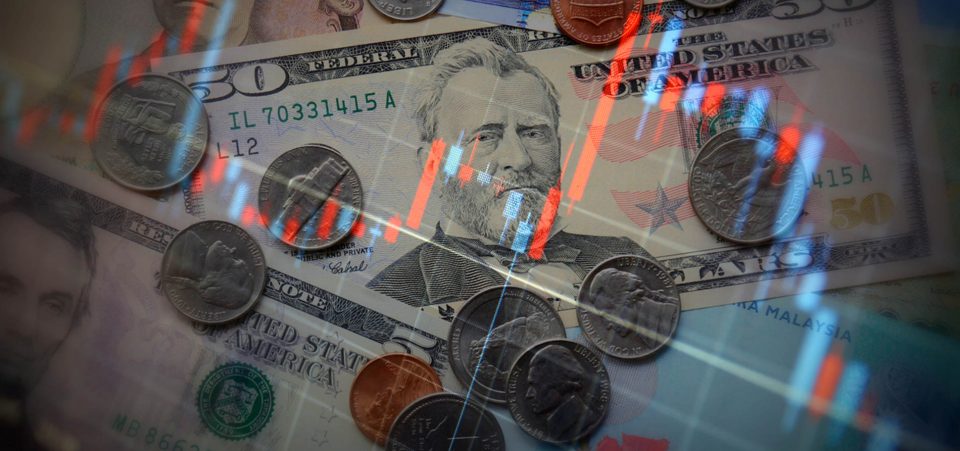Weaker U.S. Dollar Policy Would Trigger U.S. Dollar Collapse by 20%
The U.S. economy is robust enough to absorb further gradual increases in interest rates. That’s what Federal Reserve Chair Janet Yellen suggested on July 12 to justify raising rates. Yet, Yellen sounded somewhat less confident about how fast the Fed should act. Higher rates should lead to an appreciation of the dollar. But the Trump administration wants a weaker dollar while still avoiding a U.S. dollar collapse.
Janet Yellen said at a biannual hearing before a House of Representatives committee on Wednesday that the Fed would stay the course in the matter of raising interest rates. But she also assured that in the longer-term, the level of interest rates, currently between one percent and 1.25%, should “not be much higher.” Some believe the dollar could lose 20% over the next six months or a year. (Source: “U.S. Dollar Could Crash 20%,” The Street, July 11, 2017.)
Also Read:
Will the U.S. Dollar Collapse in 2017?
There would appear to be little room for compromise. The U.S. central bank has already raised its key rate twice in 2017. Investors were expecting a third rate hike, given the frequent assurances that the American economy is approaching full employment. But is it? Inflation is stagnating and the White House doesn’t share the Fed’s interest rate excitement. The president has reason to believe his preference for a weaker dollar has a good chance of materializing.
The president surely enjoys the support of a Congressional majority of fellow Republicans, as it were. But Yellen herself sounded less hawkish about interest rates. She cited the economies of the United States as well as most other leading industrial powers are improving.
But Yellen conceded that growth has not exactly been stellar. She was careful to add that the Fed would remain flexible; that is, it would be ready to hold back on raising rates. (Source: “Yellen Says Economy Is Robust, but Adds That Fed Will Stay Flexible,” The New York Times, July 12, 2017.)
The key indicator is inflation, which remains an elusive phenomenon in the advanced economies.
Weaker Dollar? Be Careful What You Ask For
A weaker dollar policy, as Trump would like, should facilitate inflation. It would make American goods more competitive in foreign markets. Theoretically, American companies would sell more and thus accumulate more revenue and hire more people. That would go a long way to make America great again. Moreover, a lower dollar would make more sense in the context of Trump’s proposed protectionist trade measures.
By imposing tariffs and duties against foreign goods, American products would be subject to reciprocal treatment abroad. There’s no surprise or evil in that. It’s expected and it can even work in America’s favor if its products are especially competent as well as competitively priced. Or so goes the theory.
One immediate effect was the Japanese yen dollar exchange. The dollar lost to the yen, dropping from a four-month high. The Federal Reserve governor’s tones have adversely affected the American currency, in effect setting the stage for a dollar collapse. The Fed’s successive interest rate hikes in 2017 led the market to expect another rise in interest rates at the next September monetary policy meeting.
The dollar index, which monitors the Greenback’s relative strength against all major currencies, touched a new minimum (95,464 points). You would have to go back to September 22, 2016, to find the dollar index at this level.
Indeed, regardless of interest rates, there is a risk of a dollar collapse. Economic growth is simply lackluster and while Europe may have finally found a way out of economic stagnation, it’s still far from optimal performance. The currency markets have picked up on the scent of fear that betrayed Yellen in her July 12 testimony.
Trump should welcome Yellen’s unexpected dovish statements and their weakening effect on the dollar. But he should also be careful what he asks for. The dollar could collapse beyond the 20% level some analysts see as essential to re-establish American competitiveness. There is that big problem of the retail sector.
The mighty dollar makes many products cheap to import, fueling the major social distraction that is shopping. American consumers feel like citizens less because of their ability to vote and more because of their ability to shop. A trip to the mall or main street distracts people from thinking too much about the injustices they have to suffer every day and the gross socio-economic inequality that exists in America.
But the value of the dollar could slip out of control. The political and judicial investigation—some might call it a witch-hunt—involving the FBI, American intelligence, as well as whole departments of the Trump administration, is having a terrible effect on the dollar. Janet Yellen’s interest rates may have played a role, but the Russiagate investigation continues.
The evidence is sensational but weak. Yet it casts an undeserved shadow over the Trump administration, which weakens the president and his policies. The dollar absorbs such risks and its weakness trend has confirmed the damage that Russiagate has already produced.






